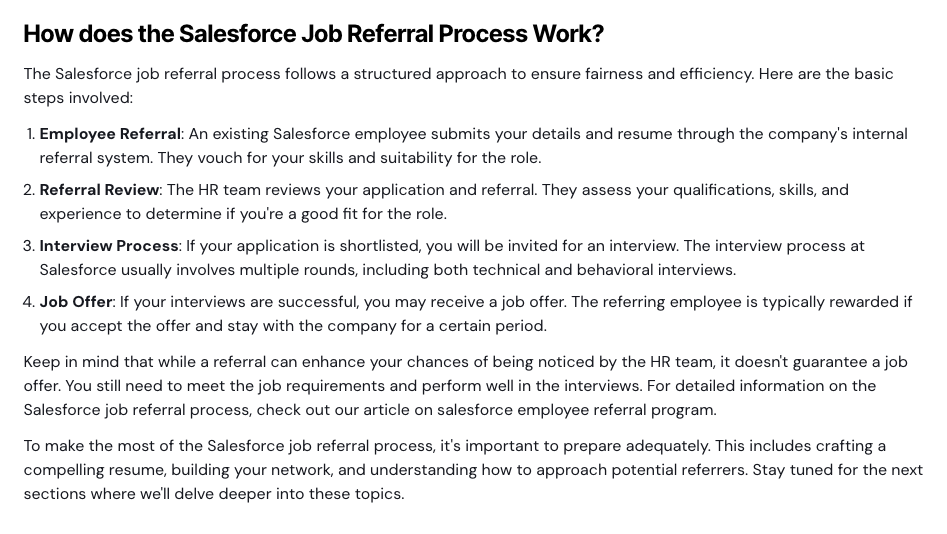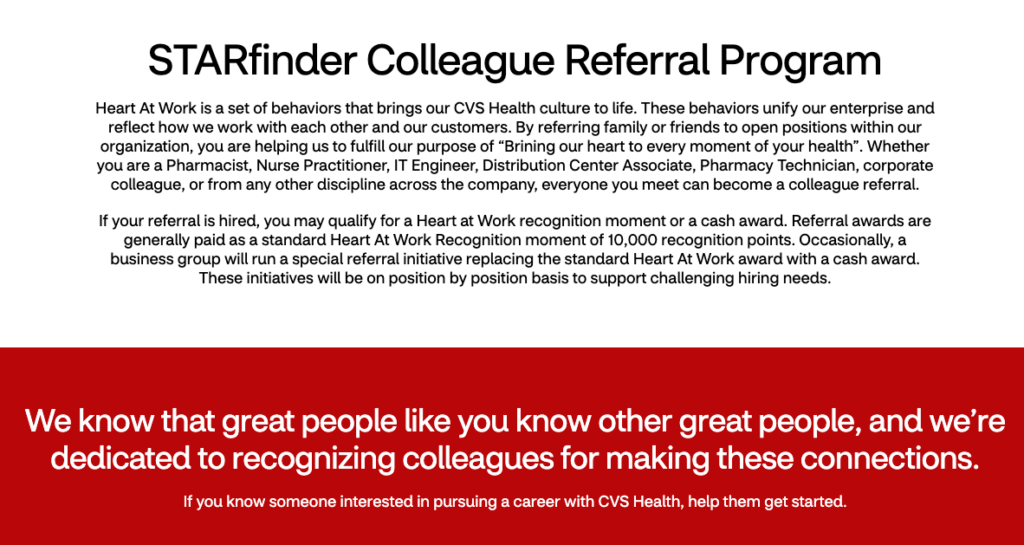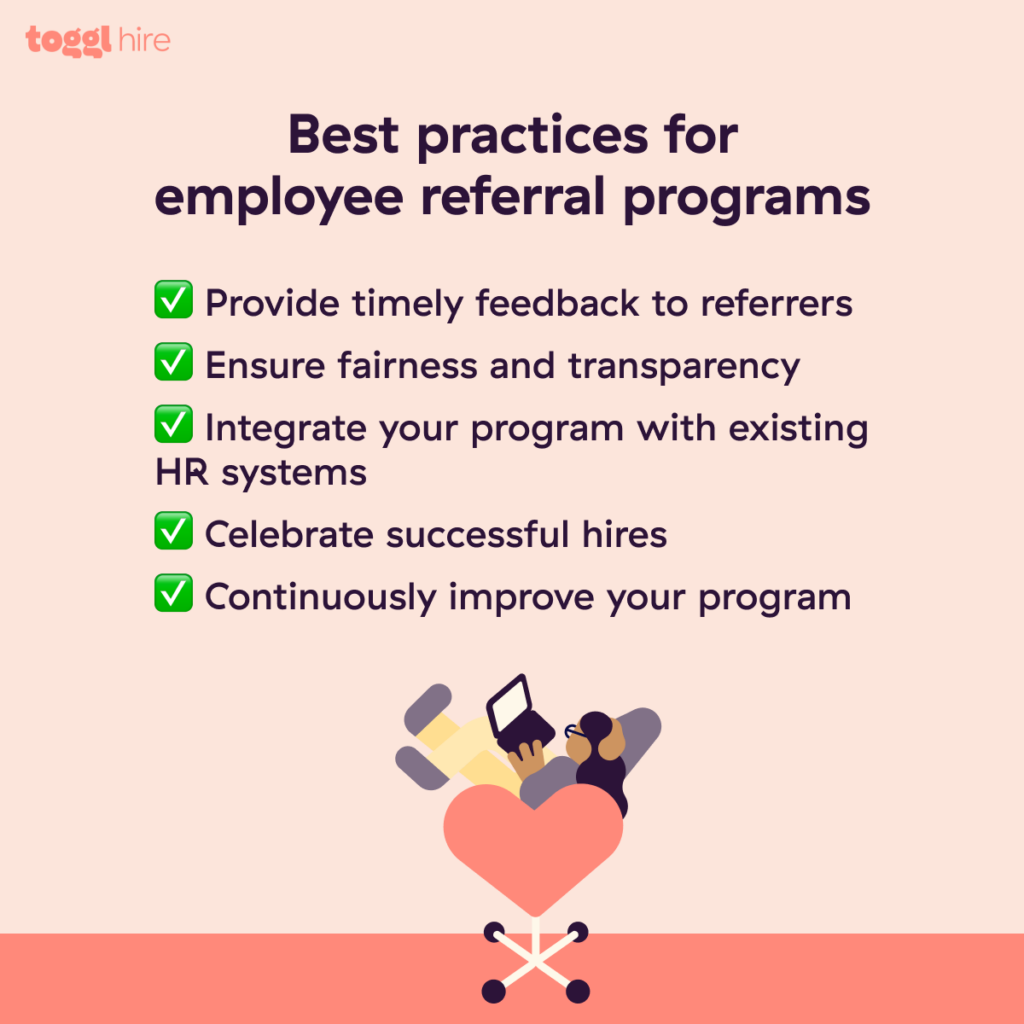Good help is hard to find…unless you’ve got a killer employee referral program. 45% of hires made via an employee referral stay over four years at a company, saving approximately $7,500 in productivity and sourcing costs.
The takeaway? By building an irresistible referral program, you can turn your employees into your biggest ambassadors while saving money and improving the quality of hires. As we’ll see, there are dozens of ways to build a killer program.
The key is to listen to your employees and understand what they really want. Aside from listening, here’s how to build an employee referral program that will keep your teams engaged and flood the referral funnel with qualified candidates.
TL;DR — Key Takeaways
Employee referral programs are a creative component of your recruiting strategy that gets your employees to do the recruiting for you by referring good-fit candidates they know.
A good employee referral program is structured, fun, and relevant to employee needs and wants. We’ve included 15 detailed examples to show you what we mean.
There are several benefits of employee referral programs, namely saving the recruitment team time, reducing hiring costs, and fostering a more close-knit company culture.
Keep these key best practices in mind: be timely, fair, and transparent in your communication. Iterate the program, and try your best to integrate with wider HR systems.
What’s an employee referral program?
An employee referral program is a strategic way to get new employees by leveraging your existing employees’ networks. Basically, you’re roping current employees into your hiring process by rewarding them for referring quality candidates they know.
Employee referral rewards can include anything from a nice cash bonus to extra vacation days or even something quirky like a snowboarding lesson.
3 types of referral programs
Employers considering implementing an employee referral program have to decide whether they want to incentivize their staff based on the quantity or quality of the referred candidates. Or a bit of both!
Here’s a quick overview of the three different types of tiered employee referral programs and their pros and cons.
| Type of Referral Program | How It Works | Benefits | Potential Drawbacks |
| Volume-Based Referral Program | Employees are rewarded based on the number of people they refer to the company, regardless of whether those referrals get hired. | Encourages a high quantity of referrals, potentially increasing the pool of candidates. | If employees are incentivized to refer as many people as possible, regardless of fit, this may lead to a large number of unqualified candidates. |
| Quality-Based Referral Program | Employees are rewarded when their referrals are hired and stay with the company for a set period. | Encourages employees to refer high-quality candidates who are likely to be a good fit for the company. | May lead to fewer total referrals, as employees are incentivized to only refer people they believe will get hired and stay. |
| Hybrid Referral Program | Employees receive a smaller reward for each referral and a larger reward (or the rest of the initial one) after the referral stays at the company for a set period. | If employees are incentivized to refer as many people as possible, regardless of fit, this may lead to a large number of unqualified candidates. | Because of the complexity, it could require more resources to administer. |
What are the benefits of employee referral programs?
Employee referral programs feed into the HR team’s talent acquisition efforts. It’s an initiative designed to bring in qualified candidates without the same time and financial costs you’d expect through advertising job openings. There’s even more in it for you, though. You can expect:
A faster time to hire since you’re not doing any recruitment marketing (referrals can be up to 5x more likely to land a role than other applicants).
Reduced hiring costs, saving as much as $7,500 per hire, according to a survey by Jobvite.
Acquiring rare top talent that could otherwise have been snapped up by another company. 82% of employers named referrals as the best channel for recruitment ROI.
Improved retention rates since successful referrals stay up to 1.5x longer than other hires.
Better company culture, as referred employees are 18% more likely to report higher job satisfaction.
How to create an effective employee referral program in five steps
Ok, so your team wants to get employees to refer qualified candidates to good candidates they know. But what’s the best approach to make this all happen smoothly?
Before diving into some great employee referral program ideas, consider these tips to help your team create a successful referral program.
Step 1: Create clear goals
Before you do anything, determine why you’re considering an employee referral program in the first place. Like anything in life, without a clear intention, you can’t set the right goals.
Once you’ve outlined your intentions, make sure you set measurable goals. This might sound like, “Increase the total number of applicants by 3% in May.” You’ll also want to give some thought to the resources you’ll need to pull this off.
This sounds super simple, we know. But don’t move on to step two until you have a clear idea of these goals. We’ve seen many companies fail to implement employee referral programs properly because they couldn’t measure their efforts.
Step 2: Build incentives, processes, and frameworks
Here comes the fun part: designing the referral program. Above all, keep it simple. Anything super complicated will never take off. Think about this like a three-layer cake:
Incentives: Make your employee referral bonus attractive to your current employees. They’re the backbone of this whole initiative.
What incentives will you offer your employees?
How often will you revise this?
Processes: Get into the nitty-gritty. Outline detailed, step-by-step plans to follow to achieve your recruitment goals.
How will employees refer potential candidates to you?
How will you keep track of all this information?
Frameworks: Structure your strategy in the optimal way to help you hit your goals.
How will you make sure your processes remain fair, transparent, and efficient?
How often will you re-evaluate the tactics you’re using to reach success?
Make sure all of this is documented in an accessible place and is a core part of every employee’s onboarding process.
Step 3: Promote your program to your employees
With a new employee referral program in hand, promote it through internal communication channels like Slack or email and include it in onboarding materials for new hires. Keep the communication simple and always focus on what’s in it for them.
Step 4: Improve your rewards based on feedback
You want to ensure that your program is as appealing as possible. A simple quarterly employee survey could be a good place to start. Send it internally and let people vote for the perks they most value.
You could also have an evergreen suggestion box where people can drop their ideas as and when they think of them. You never know what fun ideas may come up!
Step 5: Automate and expand the reach of your program
A very simple way to do this is by sharing about it on social media. Encourage employees to reshare the company’s employee referral program with their networks or post about it organically themselves.
You can also leverage technology or AI to help automate this process. One idea is to have a Slackbot ping internally every time HR posts a job opening. An automatic reminder keeps your employee referral program top-of-mind and encourages employees to refer candidates without extra effort from HR.
What makes a successful employee referral program?
78% of job seekers rely on employee referrals to find new job opportunities, so it’s important to make your employee referral program as appealing and easy to use as possible.
A good employee referral program rewards employees with things they actually want.
39% of companies offer between $1,000 and $5,000 as a referral bonus to employees
Some use a structured or tiered approach to recognize and reward top participants.
Gamifying the employee referral program through referral software is another great way to get more people involved and engaged.
15 examples of successful employee referral programs
If you’re now thinking about creating your own employee referral program but don’t know how to get started, we’ve gathered a few ideas to help you get those creative juices flowin’.
1. Seamless experience
Make it as easy as possible for employees to refer, track, and receive their rewards. A user-friendly process with clear communication goes a long way—and yes, it really can be that simple.
Why it works
The easier something is to use, the more likely people are to use it.
In the real world
Google has long been considered the gold standard in employee referral programs. Their process is simple, user-friendly, and accompanied by generous bonuses for successful referrers.
2. Make it part of the culture
Embodying your employee referral program into your culture can help foster a great workplace and a close-knit team. It helps keep employees invested and engaged in their own team’s growth.
Why it works
Keeping strong social ties to your workplace helps reduce turnover and increase retention. It also helps find high-quality talent that’s already a great culture fit, reducing onboarding time and potential friction in the team.
In the real world
Salesforce offers personalized onboarding experiences for referred candidates, matching them with the employee who referred them, ensuring a smooth integration into the company.

3. Fund a cause the employee supports
Another way to reward employees is to support a charity or cause of their choice, such as the World Wide Fund for Nature, Doctors Without Borders, or the Red Cross.
Why it works
One way is for employees to choose to donate a portion of their reward to a charity, and the company matches that donation.
In the real world
For example, Toggl Plan pledged to plant a tree for each applicant that passed the initial skills test, turning a regular hiring campaign into an environmentally friendly one.
4. Show appreciation at all stages
You don’t have to reserve bonuses just for successful referees. What about offering something to say thank you at different stages of the hiring process?
Why it works
The more that’s in it for them, the more employees will feel incentivized to participate in the referral program.
In the real world
Hubspot not only offers rewards for successful hires but also for candidates who make it to the final interview stages, even if they don’t land the job.
5. Use technology to do more
Try out referral software to automate and support your strategy.
Why it works
If you keep reminding employees about referrals and make the process super easy for them to participate in, it’ll be a win-win all around. For instance, use referral links to easily get the information you need from them.
In the real world
Innovative companies, like Nord Security, are leveraging technology to create targeted LinkedIn ads and extend their reach to all brand supporters.
6. Experiential rewards
While cash incentives are the most common rewards, many employees prefer unique experiences instead.
Why it works
You can give your top-referring employees experiential gifts they’ll never forget, such as wine tasting, cooking lessons, concert tickets, skydiving, or a kayaking trip.
In the real world
One US software company, Guidewire, that rewarded employees with an unforgettable experience month saw a 260% increase in their total referrals and a 41% increase in the number of new hires by referral. Nice!
7. Let former employees in
Your current employees aren’t the only ones who will recommend great candidates for a position. Consider opening your program up to alumni, too.
Why it works
Lean on those who have been with your company for a long time and know its values inside and out to tap into greater network effects.
In the real world
Amazon encourages former employees to refer potential candidates even after leaving the company through their “boomerang” initiative.
8. Celebrate in style
Go out of your way to show your appreciation for your successful referrers. You could even extend this to include everyone who has referred a candidate, regardless of whether they were successful.
Why it works
It helps add a personal touch to the employee experience and encourages employees to participate.
In the real world
The Cheesecake Factory’s employee referral program, Slice of Success, offers complimentary meals and organizes recognition events for its referrers.
9. Embrace diversity
Use your employee referral program to bring in more diverse candidates.
Why it works
Encourage your team to refer people from underrepresented groups, which will foster an inclusive workplace and enrich your talent pool.
In the real world
CVS Health offers additional bonuses if a referral leads to the hiring of someone from an underrepresented group.

10. Reward collaboration
Recruitment is a team sport, so let your referral program reflect that!
Why it works
This unique approach promotes teamwork and camaraderie while also encouraging employees to support each other in bringing in the best talent.
In the real world
Atlassian fosters team collaboration by rewarding entire teams for their successful hires instead of individual incentives only.
11. Create a tiered employee referral program
Why not offer rewards across different points in the hiring process?
Why does it work?
Depending on whether you incentivize based on the number of qualified referrals or new employees hired through internal referrals, you could reward each tier with better incentives.
In the real world
Microsoft offers rewards at every milestone of the hiring process, regardless of whether the candidate is ultimately hired or not.
12. Align with company values
Consider offering rewards that are directly connected to the wider mission or values of the company.
Why it works
By offering an incentive tied to company values, you can strengthen the collective identity and draw employees into your world.
In the real world
Airbnb offers travel credits to successful referrals, fostering a shared love of travel, exploration, and adventure within the company culture.
13. Get a good tagline
A good tagline for employee referral programs, like ‘refer and earn,’ can motivate your employees to start making referrals.
Why does it work?
You can inspire employees to take action by using finance-driven taglines like ‘Earn up to $1000 for referring an employee’, or by appealing to their emotional side with something like ‘Friends make the best co-workers’.
In the real world
Here’s a great example of a tagline that supports diversity in the tech space:

14. Harness speed
The faster and easier something is to do, the more likely we are to do it. Make your employee referral program the fastest thing your employees will do at work.
Why it works
A quick and seamless method will remove barriers to participation. This encourages more frequent recommendations, filling the talent pool and easing the pressure on sourcing applicants.
In the real world
Interstates lets employees refer candidates by text. The process takes just 15 seconds!
15. Improve relentlessly
Your employee’s desires and needs are always evolving. Your referral program should reflect this.
Why it works
Show your employees you’re in tune with what matters to them. This will make them feel heard, understood, prioritized and appreciated.
In the real world
UnitedHealth Group regularly evaluates and evolves its program based on employee feedback, keeping it relevant, effective, and engaging.
Best practices for employee referral programs
You’ll want to monitor and optimize your employee referral program over time. Here are a few ways we manage our program for success.

1. Provide timely feedback to referrers
Keep your referrers in the loop! Successful employee referral programs keep employees informed of how their referrals are doing. Providing feedback to the referring employee can boost employee participation and can lead to more referrals. It helps show appreciation for their efforts and keeps employees engaged in the program.
2. Ensure fairness and transparency
Maintaining fairness and transparency in the referral process is key. The evaluation criteria should be clear and accessible to all to prevent biased selection. Transparency around decision-making also builds trust in the program, prevents disputes, and fosters a positive company culture.
3. Integrate with existing HR systems
Integrating your program with existing HR systems and tools will make your life easier. This will make it much easier to track employee referrals, manage candidate information, and measure performance. Using ATS integrations provides a smooth hiring experience for referred candidates, from submission to hire.
4. Celebrate successful hires publicly
Recognize and celebrate new hires from the employee referral program. Make a big deal of giving the referral bonuses, too. This kind of public recognition can boost morale and encourage participation in the referral program. You might decide to feature the successful referring candidate in a company newsletter, highlight them in a team meeting, or on your organization’s social media channels.
5. Continuously improve the program
As we’ve mentioned, be sure to continuously evaluate and improve the referral program. Regular feedback from employees and hiring managers will identify areas for improvement. Conduct surveys to gather employee insights and make data-driven adjustments.
Don’t forget to properly assess employee referrals
Referrals have the odds stacked in their favor, but it’s still important to assess them independently. They’re probably a great culture fit, so what you’ll want to focus on is making sure the hard skills are also there.
How? Give them a skills assessment or homework assignment. Toggl Hire can help with that—it’s actually our bread and butter. We’ve got thousands of expertly crafted questions for all kinds of positions that can help you cut through the noise and hire the best talent faster.
Try it for free for yourself.
Julia Masselos is a remote work expert and digital nomad with 5 years experience as a B2B SaaS writer. She holds two science degrees Edinburgh and Newcastle universities, and loves writing about STEM, productivity, and the future of work. When she's not working, you'll find her out with friends, solo in nature, or hanging out in a coffee shop.

